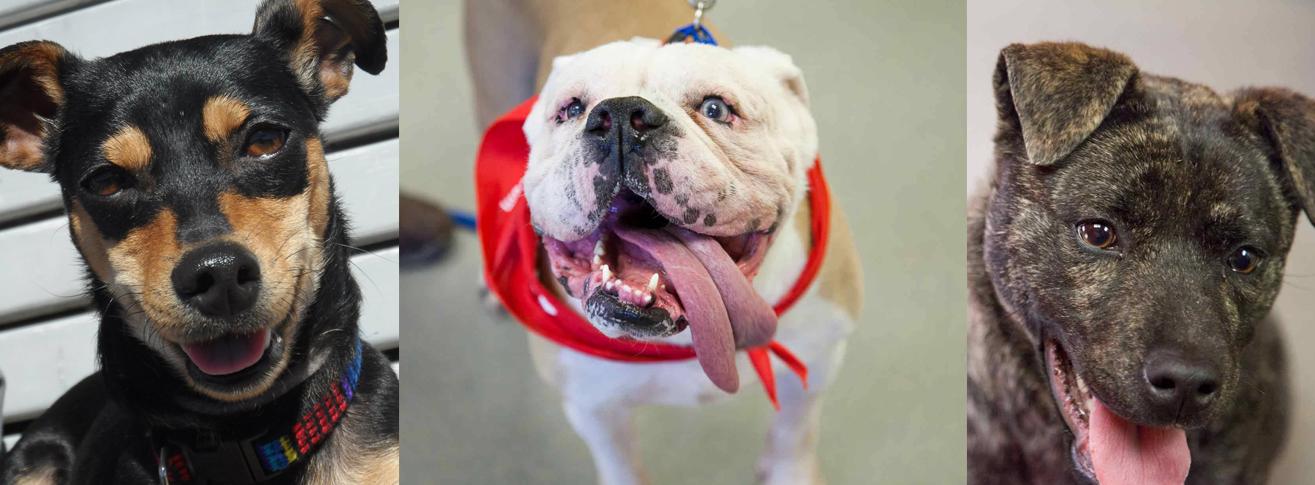Clicker Training for You and Your Pet
By Sherry Woodard, Best Friends animal behavior consultant
What is clicker training?
Clicker training is a fun and effective way to communicate with your pets. You can train almost any kind of pet — including cats, birds, dogs, and horses — to respond to the clicker. For example, you can teach your dog to sit or your bird to hop onto a stick using clicker training. The only thing you need is a clicker, some treats, and an animal friend.
Clicker training is gentler than traditional training methods. According to Karen Pryor’s clickertraining.com website, “In traditional training, you tell an animal or person what to do, make that behavior happen (using force if necessary), reward good results, and punish mistakes. In clicker training you watch for the behavior you like, mark the instant it happens with a click, and pay off with a treat. The treat may be food, a pat, praise, or anything else the learner enjoys. If the learner makes a mistake all you do is wait and let them try again.”
How did clicker training get started?
Clicker training uses a method called operant conditioning, pioneered by psychologist B.F. Skinner in the 1960s. Skinner observed that an animal will tend to repeat an action that has a positive consequence and will avoid an action that has a negative consequence. If a primary reinforcer (like food) is used, the animal will become conditioned to repeat the action that produces the food. Using operant conditioning, Skinner trained rats to push a lever that released food pellets.
The clicker is used as a conditioned reinforcer, a cue that something good is coming. A form of clicker training (using whistles) was originally used with great success on dolphins. In the 1990s, clicker training for other animals really took off when trainers realized how easy and effective it was.
How does clicker training work?
Clicker training works by getting your pet to expect something positive (like a treat) in return for doing something you ask him or her to do. You use the clicker so that your pet will associate the treat with the clicking noise. Eventually, you won’t even have to use treats; your pet will respond to the clicker alone.
How do I do clicker training?
To start, make sure you have your clicker and some soft treats on hand, cut or broken up into small pieces. You don’t want treats that are too crumbly, since you want your pet to focus on you, not the crumbs dropping on the floor.
Step 1: Face your pet. Push and release the clicker, then give your pet a treat. Practice this a few times. You want your pet to expect a treat every time she hears the clicking noise.
Step 2: Ask your pet to do something easy, like “sit.” Then, as she is doing what you’ve asked, click the clicker and offer the treat. Make sure you click and offer the treat while your pet is sitting, so she connects it all together: the click, the treat, and the act of sitting.
What if my pet doesn’t do what I asked?
If your pet doesn’t do what you’ve asked (like sit or come), don’t click or offer a treat. You can try to help her get the idea by holding the treat above her nose (to get her to sit) or by walking away from her and holding the treat out in front of you (to get her to come).
If your pet is still not responding, you can do a click when there’s even small movements in the right direction. For example, if you are working on “come” and your pet takes two steps in the right direction, click the clicker and offer a treat. Don’t ever push, pull or force her to do what you want.
What other kinds of things can I teach my pet to do?
Once your pet has learned one behavior and does it every time, you can start adding others. Don’t try to teach her more than one at a time. Here are some examples of other behaviors to click and give treats for:
- A head tilt
- Holding up one paw (high five!)
- Sitting up on her hind legs
- Dancing or turning in a circle
Remember:
- Click while the behavior is happening.
- Always click first, then offer a treat.
- Only click once.
One last thing: Keep the practice sessions short. You want your pet to enjoy clicker training, so don’t make it into a chore. Have fun clicker training your pet!
Where can I find out more about clicker training?
Here are two websites to check out:
www.clickertrain.com
www.clickertraining.com

